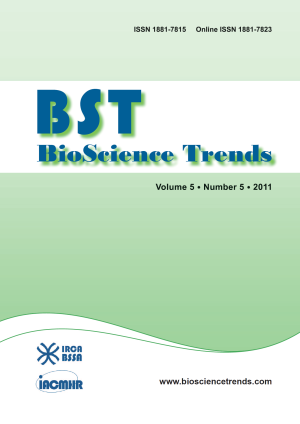NAD(P)H-醌氧化还原酶1以表达水平依赖性的方式诱导线粒体功能障碍和铁中毒的复杂效应。
IF 5.7
4区 生物学
Q1 BIOLOGY
引用次数: 0
摘要
NAD(P)H-醌氧化还原酶 1(NQO1)是一种重要的氧化还原酶,负责氧化还原平衡和能量代谢。尽管它很重要,但大脑中含有大量多不饱和脂肪酸,NQO1 的表达水平却很低。在这项研究中,我们研究了在导致线粒体功能障碍和铁中毒的毒性损伤中,NQO1 的表达水平如何影响细胞的存活,以及 NQO1 是否有可能成为不同压力条件下的生物标志物。经鱼藤酮处理后,SH-SY5Y细胞中过表达的NQO1通过增加NAD+供应而减少线粒体还原应激,从而提高了细胞存活率。然而,在使用 RSL3 和麦拉宁处理后,NQO1 的过表达会促进脂质过氧化。脂滴染色试验显示,过表达 NQO1 的细胞中脂滴增多。与此相反,NQO1 基因敲除通过增加 GPX4、xCT 和 GSH/GSSG 系统,保护细胞免受铁变态反应的影响。此外,与非转染者和过表达 NQO1 的细胞相比,敲除 NQO1 的细胞铁含量和脂滴含量更低,尽管它不能减轻细胞暴露于鱼藤酮时的死亡。总之,我们的研究表明,不同的 NQO1 水平可能因周围环境的不同而各有利弊。因此,在治疗神经元疾病时,调节 NQO1 的表达可能是一种潜在的辅助手段。本文章由计算机程序翻译,如有差异,请以英文原文为准。
NAD(P)H-quinone oxidoreductase 1 induces complicated effects on mitochondrial dysfunction and ferroptosis in an expression level-dependent manner.
NAD(P)H-quinone oxidoreductase 1 (NQO1) is an essential redox enzyme responsible for redox balance and energy metabolism. Despite of its importance, the brain contains high capacity of polyunsaturated fatty acids and maintains low levels of NQO1 expression. In this study, we examined how levels of NQO1 expression affects cell survival in response to toxic insults causing mitochondrial dysfunction and ferroptosis, and whether NQO1 has a potential as a biomarker in different stressed conditions. Following treatment with rotenone, overexpressed NQO1 in SH-SY5Y cells improved cell survival by reducing mitochondrial reductive stress via increased NAD+ supply without mitochondrial biogenesis. However, NQO1 overexpression boosted lipid peroxidation following treatment with RSL3 and erastin. A lipid droplet staining assay showed increased lipid droplets in cells overexpressing NQO1. In contrast, NQO1 knockdown protected cells against ferroptosis by increasing GPX4, xCT, and the GSH/GSSG system. Also, NQO1 knockdown showed lower iron contents and lipid droplets than non-transfectants and cells overexpressing NQO1, even though it could not attenuate cell death when exposed to rotenone. In summary, our study suggests that different NQO1 levels may have advantages and disadvantages depending on the surrounding environments. Thus, regulating NQO1 expression could be a potential supplementary tool when treating neuronal diseases.
求助全文
通过发布文献求助,成功后即可免费获取论文全文。
去求助
来源期刊

Bioscience trends
BIOLOGY-
CiteScore
13.60
自引率
1.80%
发文量
47
审稿时长
>12 weeks
期刊介绍:
BioScience Trends (Print ISSN 1881-7815, Online ISSN 1881-7823) is an international peer-reviewed journal. BioScience Trends devotes to publishing the latest and most exciting advances in scientific research. Articles cover fields of life science such as biochemistry, molecular biology, clinical research, public health, medical care system, and social science in order to encourage cooperation and exchange among scientists and clinical researchers.
 求助内容:
求助内容: 应助结果提醒方式:
应助结果提醒方式:


